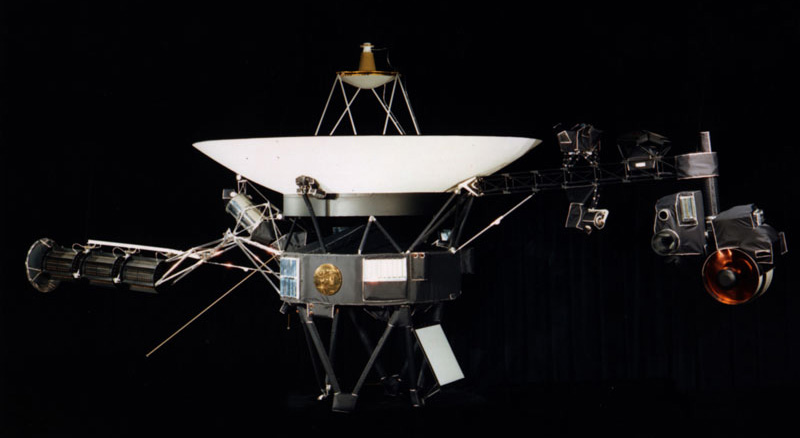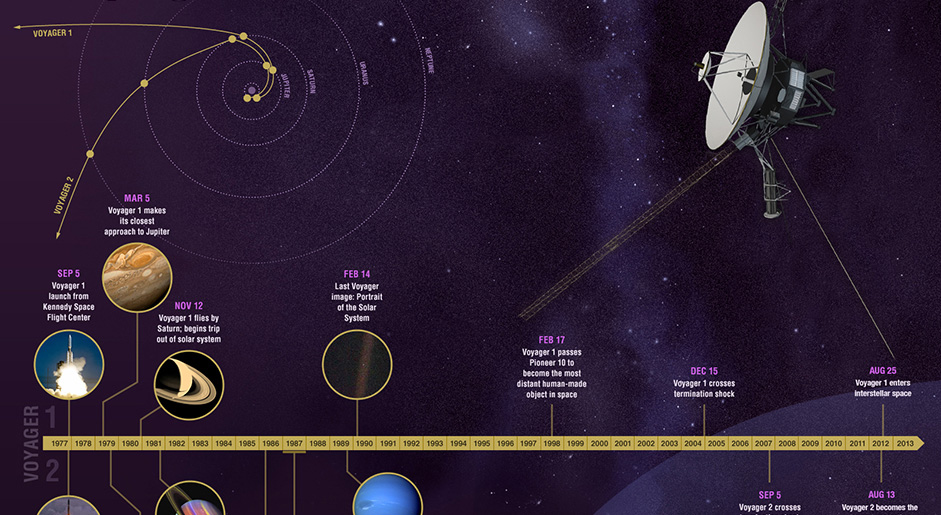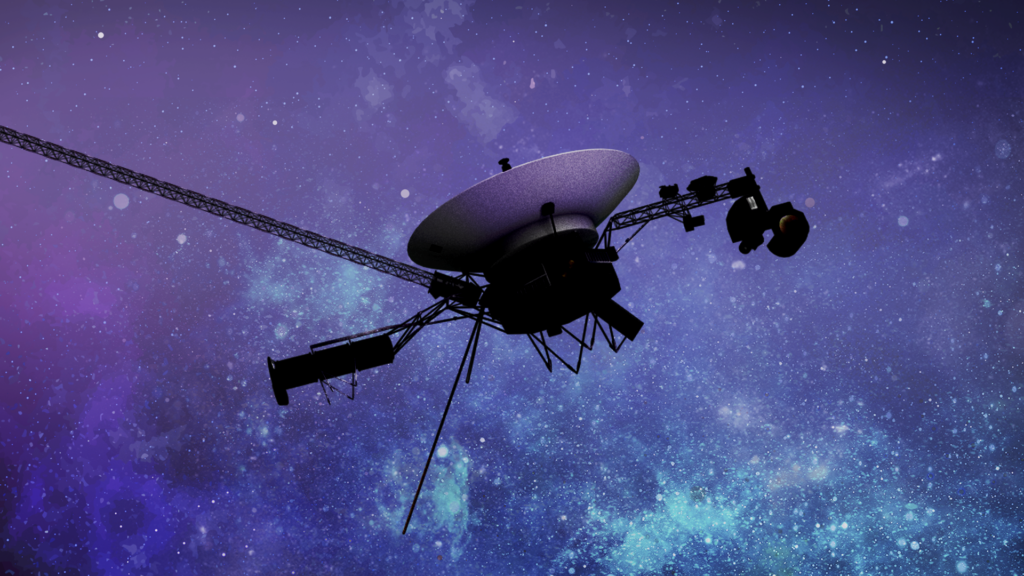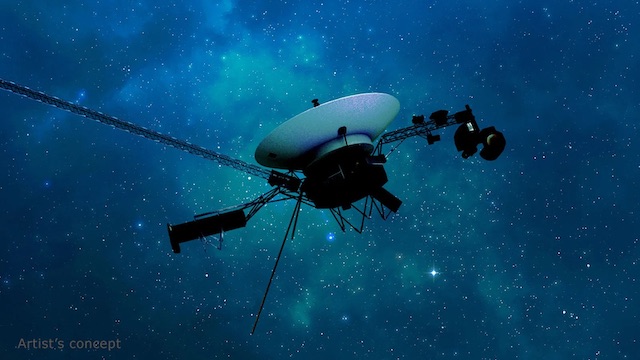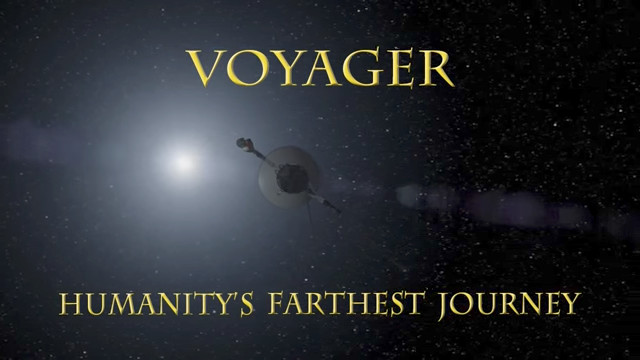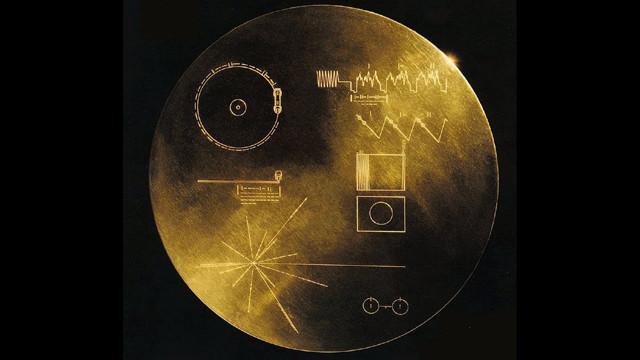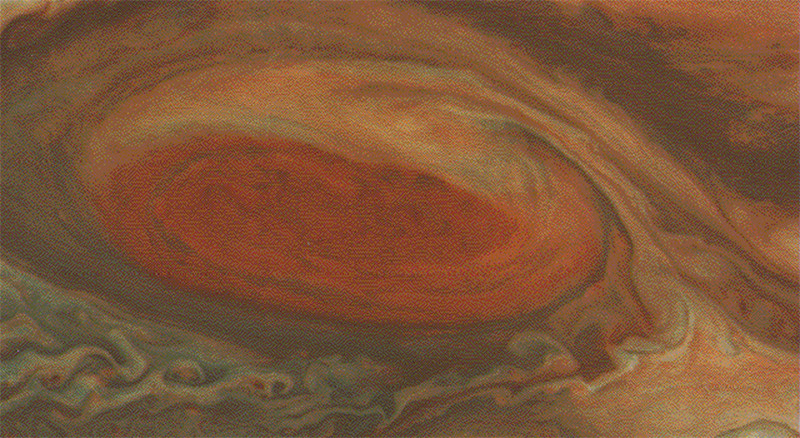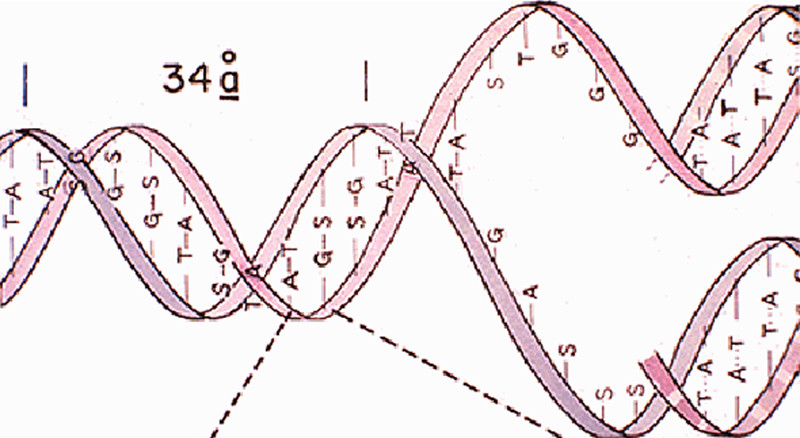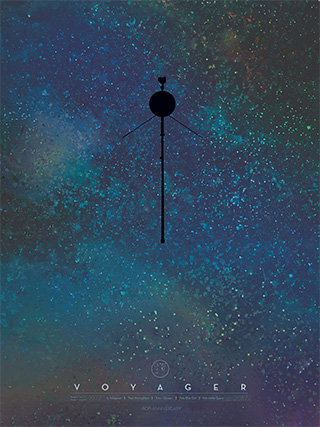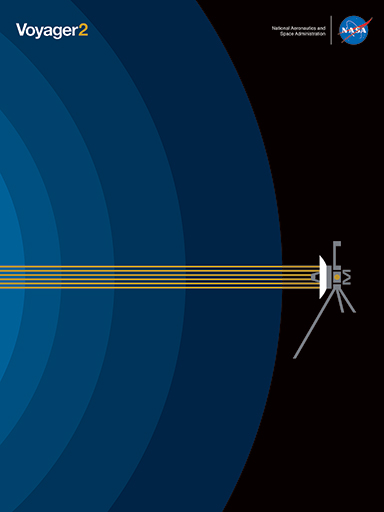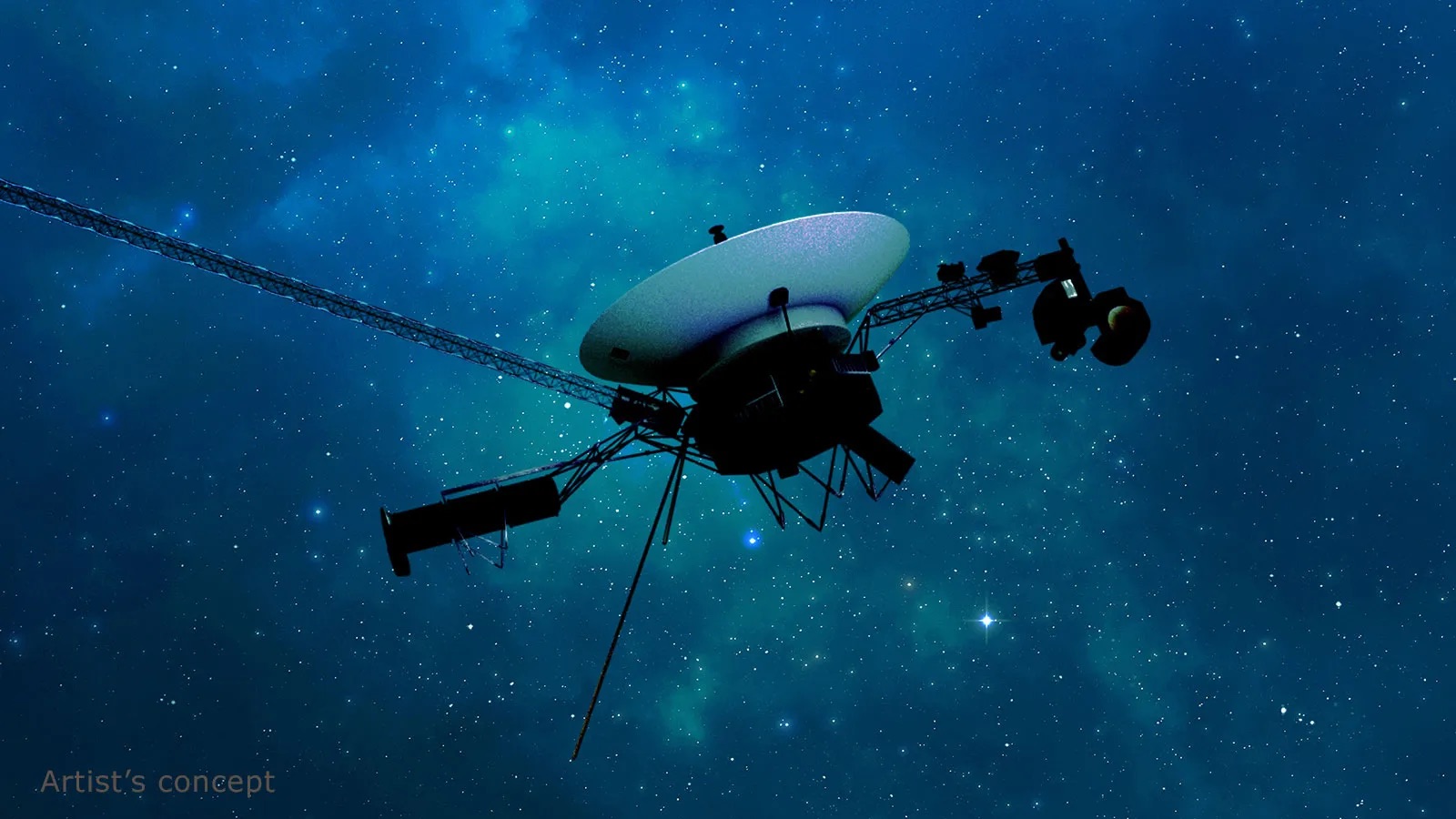


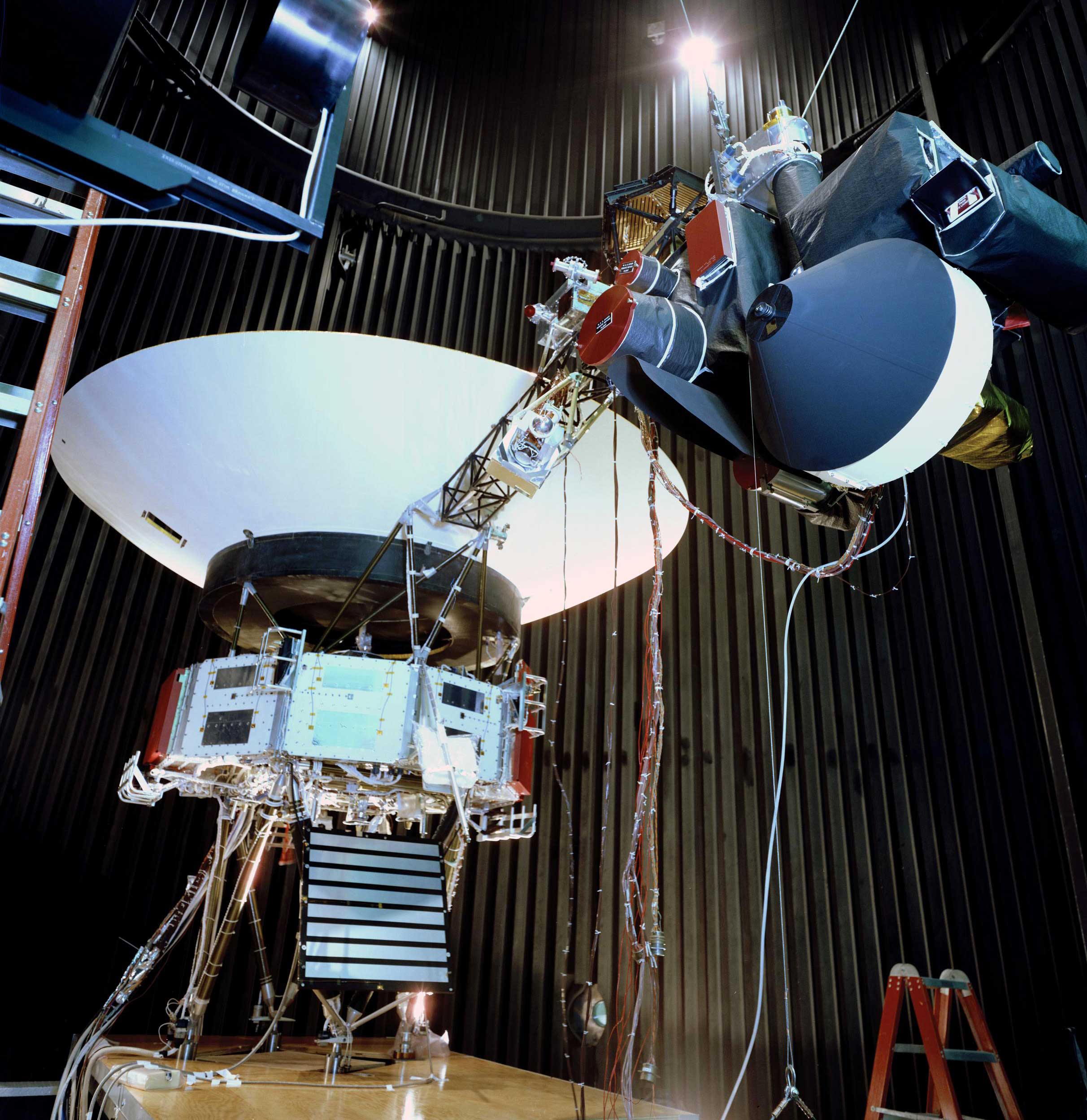

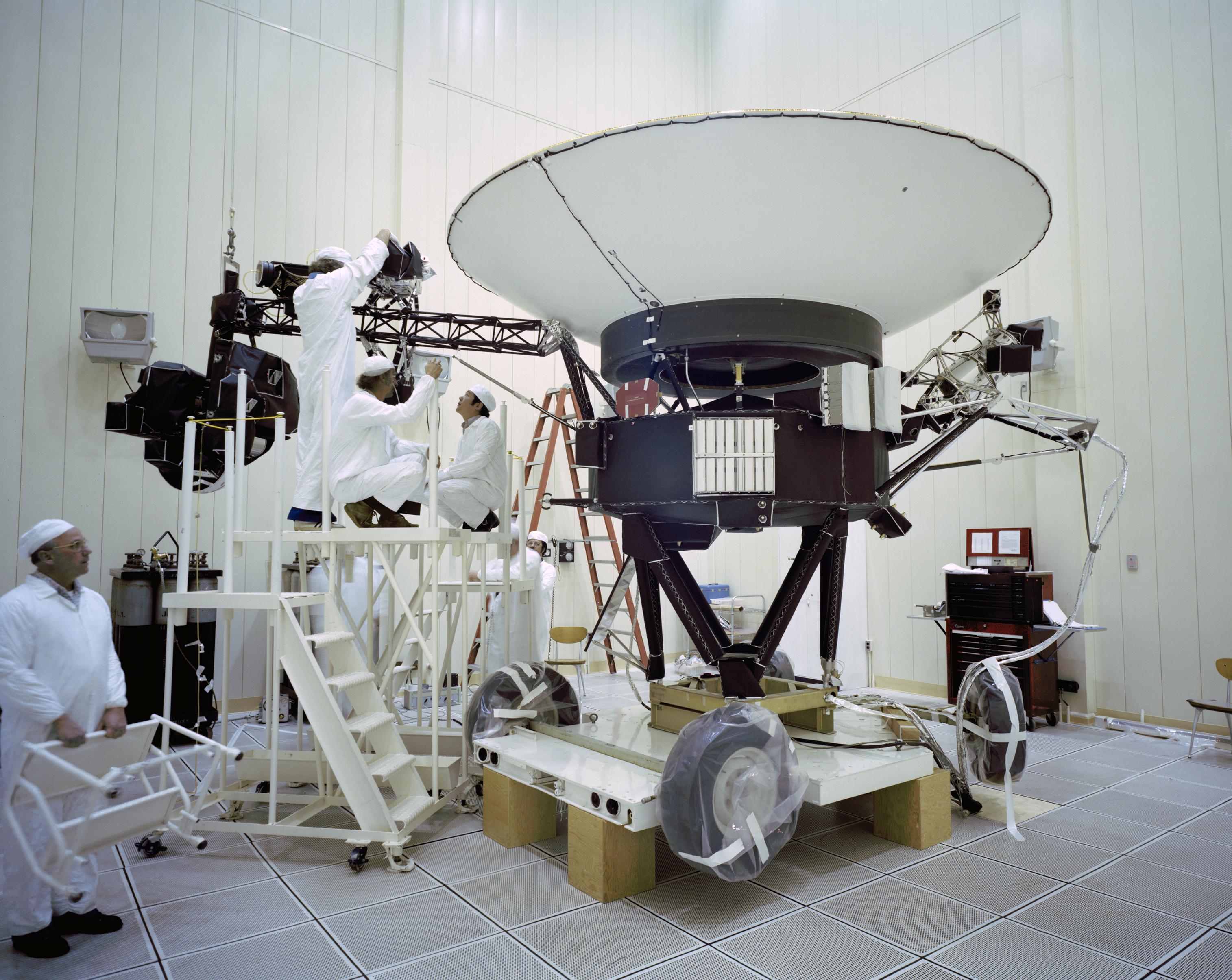
-
Voyager 1 Distance from Earth
This is a real-time indicator of Voyager 1's distance from Earth in astronomical units (AU) and either miles (mi) or kilometers (km). Note: Because Earth moves around the sun faster than Voyager 1 is speeding away from the inner solar system, the distance between Earth and the spacecraft actually decreases at certain times of year.Voyager 1Distance from Earth
-
Voyager 1 Cosmic Ray Data
This meter depicts readings by Voyager 1's cosmic ray instrument. The instrument detects charged particles that dominate inside the bubble our sun blows around itself (green) and charged particles that dominate outside our solar bubble (orange). Data from this instrument suggested that Voyager 1 entered interstellar space on Aug. 25, 2012, when the inside particles (green) dipped closer to 0.0 and the outside particles (orange) rose to above 2.0.Voyager 1Cosmic Ray Data -
Voyager 2 Distance from the Earth
This is a real-time indicator of Voyager 2's distance from Earth in astronomical units (AU) and either miles (mi) or kilometers (km). Note: Because Earth moves around the sun faster than Voyager 2 is speeding away from the inner solar system, the distance between Earth and the spacecraft actually decreases at certain times of year.Voyager 2Distance from Earth
-
Voyager 2 Cosmic Ray Data
This meter depicts readings by Voyager 2's cosmic ray instrument. The instrument detects charged particles that dominate inside the bubble our sun blows around itself (green) and charged particles that dominate outside our solar bubble (orange). Data from this instrument suggested that Voyager 2 entered interstellar space on November 5, 2018, when the inside particles (green) dipped closer to 0.0 and the outside particles (orange) rose to above 2.0.Voyager 2Cosmic Ray Data
IMP
MET

